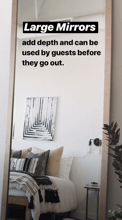In today’s world choice can often be associated with freedom and autonomy but is it really liberating? Or is this plethora of choice in absolutely everything we do actually oppressing? Ask anybody dating in this modern Tinder era. When you always think something better is around the corner it’s easy to get distracted by other options. And the irony is, sometimes people who have too many options actually feel paralysed by it and end up making no choice at all.
The Paradox of Choice is a theory that was initially proposed by the American psychologist, Barry Schwartz in his book The Paradox of Choice, published in 2004. Since publication there has been much debate around the world as to whether abundance of choice is a stressor or a benefit in our busy lives, with many believing too much choice leads to indecisiveness, less satisfaction and poorer decisions.
In 2000 Iyengar and Lepper carried out an experiment in which they set up a “free sample” table at a grocery store and presented customers with either 6 or 24 jam flavours. When presented with just 6 options 30% of people made a purchase whereas only 3% made a purchase when confronted with 24 options. Procter and Gamble ran a similar experiment that found that decreasing the available choice of any given product led to a 10% revenue increase. So what does this mean for hotels?
Image source: https://twitter.com/g__j/status/
For hotels it can be difficult to limit choice on their website and booking engine. With an abundance of room types, rates and packages it can soon become very busy. However just a few simple strategies can make a big difference to your user experience and conversion rates.
Room Types
It can be tempting to list all your inventory on the one page but with just 5 room types and 6 rateplans that’s already 30 different options for a guest to consider.
Some hotels have in excess of 10 different room types. This can take the guest a lot of time to decipher the differences between each. Ask yourself are some of your room types very similar? Could you reduce the overall number and change the categorisation?
Is there a room type that rarely sells online that perhaps can be sold over the phone as an upgrade rather than listing it on the website? Or could you list your most popular room type first in the sell sequence, helping make a guest’s decision easier?
Offers
A lot of hotels have far too many offers on their website making the choice completely overwhelming for the user. It’s imperative that hotels look to see what offers are not selling and remove them from the website. There is no point in having offers up there that sell 1 or 2 rooms a month and provide very little monetary gains, but add lots more scrolling and confusion to visitors. It’s likely these offers are actually costing you money.
Also consumers need to be able to see the different benefits of each offer so they can easily compare. Make sure the description in each of your offers is clear.
Use something like the action bar below to promote a seasonal or limited time offer. This is a better way to increase visibility on a short term offer and drive conversions.
Pricing
By using multiple pricing strategies this can add confusion to the customer. Streamline the options and use one way of pricing. A customer should never have to take out a calculator to figure our the price difference between two options on your booking engine.
Last year we did some pricing research at Net Affinity and found that on desktop, hotels using total pricing methods (per room, per night, and total stay) from start to finish outperformed the lowest converting pricing method of per person pricing by 74%. For more details on the best way to price your rooms see here.
Enhancements
While some resort properties make substantial revenue from their enhancements, a lot of hotels don’t sell much at all and it can be worthwhile considering removing the option completely from the booking process to limit distractions. The other option is to close them on default so the user only opens them if they’re interested.
If you do have enhancements for sale please review your categories to see if they’re all worth keeping. That bouquet of flowers you have on sale, how much revenue did that generate last year for example? Then list the categories in order of popularity to make it easier for the user. Also please don’t list every available bottle of wine or spa treatment you have. Include the key sellers and keep the choice (and scrolling) limited.
Reduce CTA’s
When a user lands on your website it’s imperative they know what action you want them to take next. So for a hotel website this is usually a Book Now or Make a Reservation button. Ensure that you don’t have a secondary CTA on your site that is gaining more attention through it’s position or colour. Too many buttons on a landing page can confuse a visitor to the point that they bounce from the site without taking any of the desired actions.
CONCLUSION
We have now reached a point where too much choice feels more limiting than liberating. But by making some smart, tactical changes you can still have the value of choice without overwhelming your customers.
Have you implemented any changes to your site that resulted in better conversion? Let us know in the comments below.





